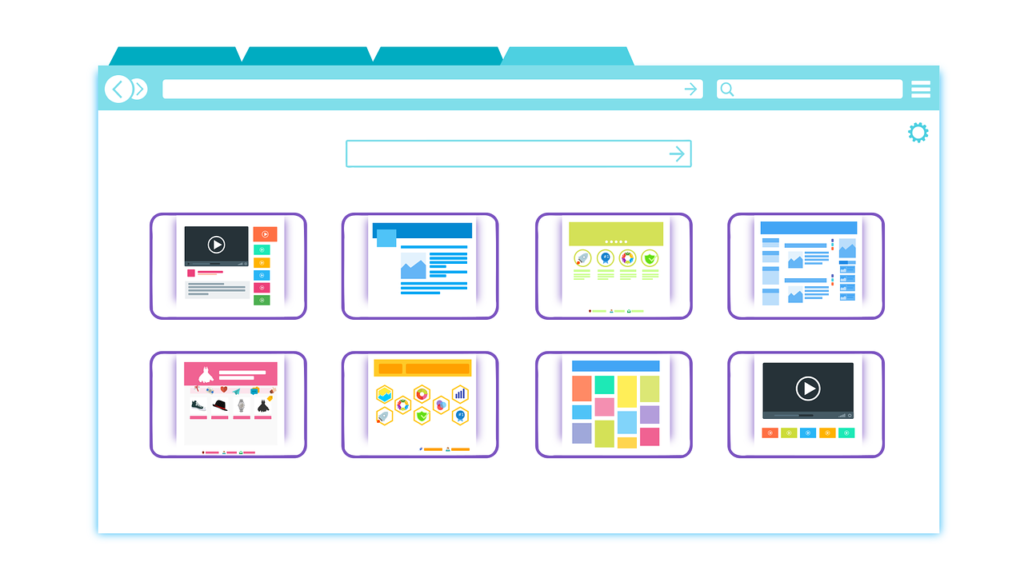Vanity URLs are simple yet powerful tools that improve branding and make it easier for customers to access specific web pages. Businesses use them to create a memorable online presence while ensuring efficient tracking of marketing efforts.
What is a Vanity URL?
A vanity URL is a shortened, branded web address that redirects users to a more complex or lengthy URL. It allows businesses to create URLs that are easy to recall and type, making them ideal for offline and online promotions. Vanity URLs help simplify long URLs that may contain tracking parameters, special characters, or dynamic elements.
For example, a company promoting a special sale may create a vanity URL like “brand.com/sale” that redirects to the actual sale page. This makes it easier for customers to remember and visit the page without struggling to type a long and confusing web address.

Why use a Vanity URL?
Vanity URLs serve multiple purposes, especially in digital marketing. Here are some key reasons businesses use them:
Memorability – A shorter, customized URL is easier for users to remember and type.
Branding – Enhances brand recognition by incorporating the company name or keywords into the URL.
Tracking and Analytics – Helps track marketing campaign performance through redirecting to URLs with UTM parameters.
Improved User Experience – Simplifies navigation and reduces the risk of users entering incorrect URLs.
Better Engagement in Offline Marketing – Works well in print ads, TV commercials, and other offline media where clickable links are unavailable.
How it works?
Vanity URLs function through a 301 redirect, which permanently forwards the vanity URL to the original, longer URL. When a user enters the vanity URL in a browser, they are automatically redirected to the intended destination without seeing the long URL. This seamless redirection process ensures a smooth user experience.
Why not use Vanity URLs as Original URLs?
Businesses do not replace original URLs with vanity URLs for several reasons:
SEO Considerations – Original URLs often contain structural elements essential for search engine optimization.
Tracking Complexity – Marketing URLs often include tracking parameters that are not user-friendly.
Website Organization – Websites maintain specific URL structures for internal navigation and categorization.
While vanity URLs make it easy for users to access pages, businesses must retain original URLs for proper site management and analytics.
Best practices for creating:
Creating an effective vanity URL requires careful planning. Here are some best practices:
Keep it Short and Simple – Use as few characters as possible to ensure easy recall.
Use Meaningful Words – Choose words relevant to the campaign or product.
Avoid Special Characters – Stick to letters and numbers to prevent confusion.
Maintain Consistency – Follow a uniform structure for all vanity URLs used in marketing campaigns.
Test Before Publishing – Ensure the vanity URL redirects correctly before using it in promotions.
Can you reuse Vanity URLs?
Yes, but it requires caution. Reusing vanity URLs for different campaigns may lead to tracking issues and user confusion. Instead, it is advisable to create unique vanity URLs for each campaign to maintain clarity and avoid misdirection.

How to set up a Vanity URL in three steps?
Setting up a vanity URL is quick and easy. Here is a step-by-step guide:
Choose a Vanity URL
Select a URL that is short, meaningful, and relevant to the campaign.
Ensure it is unique and not already in use on the website.
Set Up a 301 Redirect
A 301 redirect permanently forwards the vanity URL to the actual URL.
Website owners can implement a redirect using server settings, plugins, or tools like cPanel.
Test the Vanity URL
Enter the vanity URL in a browser to check if it redirects correctly.
Use online redirect checker tools to verify the redirection process.
Ensure tracking parameters are correctly passed to analytics software.
Common misconceptions about Vanity URLs:
Many people confuse vanity URLs with other types of URLs. Here are some clarifications:
Not a Display URL – Display URLs appear as anchor text but do not redirect like vanity URLs.
Not a shortened URL – URL shorteners generate generic short links, while vanity URLs are branded and customized.
Not a Personal Domain – Vanity URLs are different from personal brand domains that serve as website homepages.
Not an SEO Booster – Vanity URLs do not impact search rankings as search engines index original URLs, not redirected ones.
Not a Vanity Domain – Vanity domains are entire domain names redirected to another site, while vanity URLs operate within an existing domain.
Where to use Vanity URLs?
Vanity URLs are widely used in marketing and advertising. Common use cases include:
Print Advertising – Magazines, flyers, billboards, and business cards.
TV and Radio Ads – Easy-to-remember URLs for spoken promotions.
Social Media Campaigns – Simplified URLs for social media posts and ads.
Email Marketing – Short URLs for better engagement in email campaigns.
Event Promotions – URLs promoting events, webinars, and registrations.
Conclusion
Vanity URLs are an excellent tool for businesses looking to enhance their marketing efforts and brand identity. They simplify long and complex URLs, making it easier for users to access content while maintaining seamless tracking capabilities. By following best practices, businesses can create effective vanity URLs that improve user engagement and drive traffic.
Whether for print advertising, social media, or email marketing, vanity URLs help create a more professional and user-friendly online presence. With a simple setup process and multiple benefits, they are a valuable asset for any business looking to improve its digital marketing strategy.

